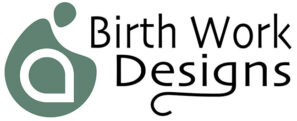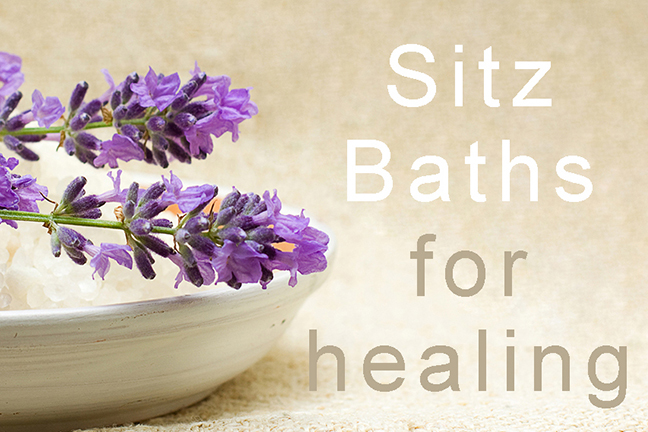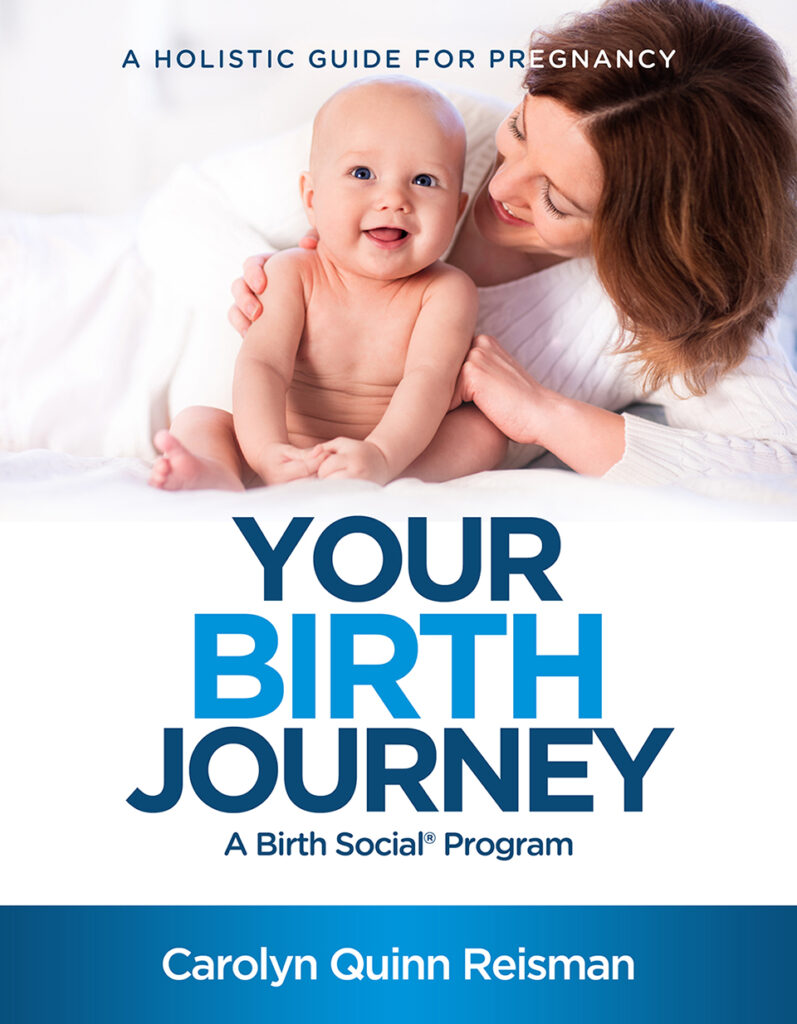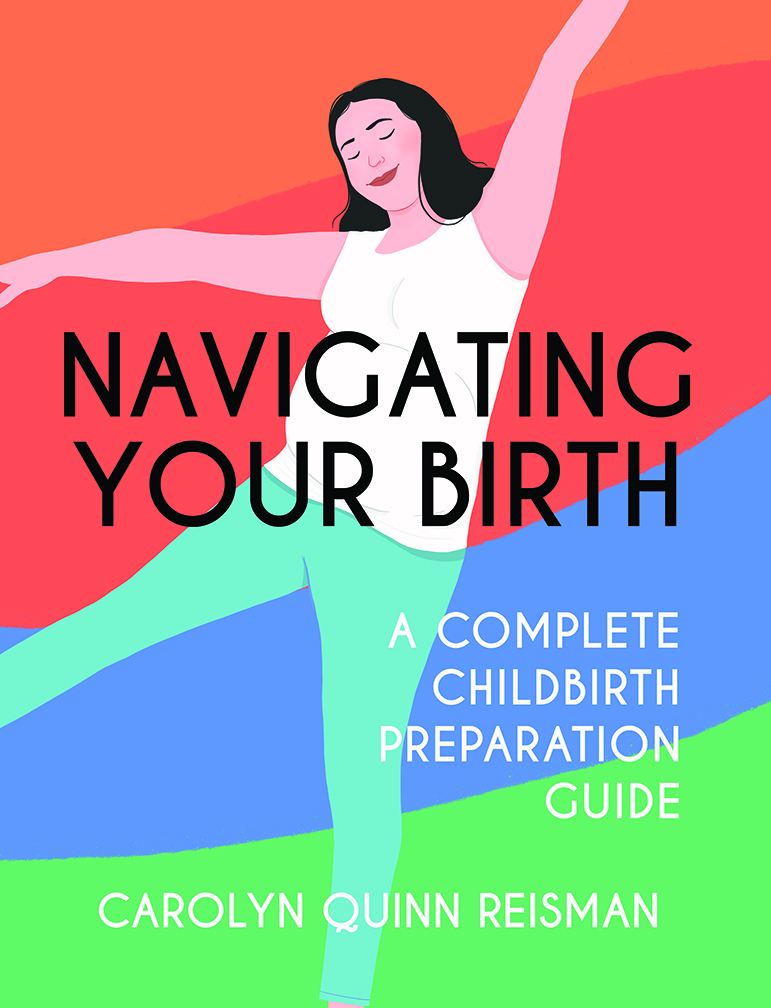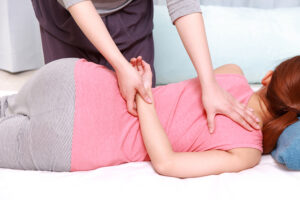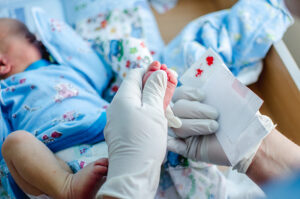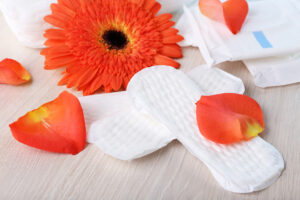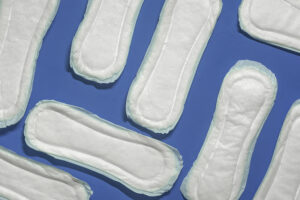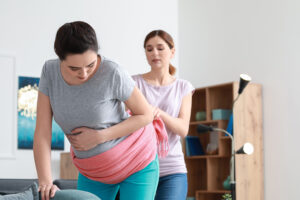After the birth of your baby, and whether you tore or not, you may feel tender for a few days. Your vaginal tissue could have small abrasions or splits in the tissue, much like a split lip. Providers sometimes refer to these abrasions as skid marks. These abrasions heal much faster than a laceration that requires stitches, which can remain tender for a few weeks or longer.
So, when it comes to your bottom, you definitely want to stock up on items that will aid in perineal recovery. Be sure to have items you might want to have – BEFORE your baby arrives.
The Peri Bottle -Your Best Friend
A “peri bottle”? It is really like a squirt bottle filled with warm water that you use to clean your perineum and anal area. Your perineum is the area between your vagina and anus. Peri is short for perineum, aka – your bottom.
Expect to feel a little stinging when you urinate. You can help relieve the stinging as you urinate by squeezing a peri bottle filled with warm water over your perineum. Think of your peri bottle as your own personal bidet. After cleansing, pat dry with toilet tissue. Also, use the peri bottle to clean after each bowel movement and remember to “wipe” from front to back.

Adding Extra Relief to Your Peri Bottle
Add four tablespoons of witch hazel, two tablespoons of aloe vera, and one teaspoon of sea salt to your peri bottle for extra relief. Do not add essential oils, as the oil can come into contact with your sensitive parts and sting. You can also use a sitz bath herbal infusion for cleansing yourself.

Ice. Ice. Ice.
In the first 24-48 hours after birth, you should place something cold on your perineum to reduce swelling and pain. Apply ice/cold packs for 20 minutes every hour or two on day one, and on day two every time you change your pad or until the swelling goes down.
The options below for icing your perineum require you to wrap the frozen cold pack in cloth, such as flannel, tea towels, or washcloths, while others come with sleeves. The ice/cold pack mustn’t directly contact your skin, as it may cause ice-burn. If you are using menstrual cloth pads from the Pampered Shop on Etsy, the pads have a pocket for an ice gel pack. Luxurious! They come in a package of 14 or 7.
If you are not using pocket cloth pads, wrap the freezy item in cloth. I always ask mothers to buy about 20 white washcloths for their birth. You can get them in packages of 18 to 24 for an affordable price. Buy two packages. They come in handy for just about everything for birth, babies, and postpartum. Be sure to wash the cloths before use. Use fragrance-free detergent and NO fabric softeners or dryer sheets.
There are a few icey options to choose from.
- Frozen peas or corn. Peas and corn are the best choices for vegetables because they are small and conform to your body. Place a large handful of frozen veggies in a clean Ziplock baggie, then wrap the bag in a clean cloth.
- Ice. Crushed ice will feel more comfortable than cubed ice, but either one works. Do the same thing as with the frozen peas – place in a clean Ziplock baggie and wrap in a clean cloth.
- Icewrap Gel Packs. These are a great choice to put in your freezer, as they are affordable, flexible, and can be used for all sorts of first aid relief, including your perineum. These 3.4X9.5 inch packs work perfectly for perineal care. They are reusable, so place the ice pack in a clean Ziplock baggie and wrap in a clean cloth.
- Perineal Cold Pads. These specially designed, instant cold packs for postpartum perineal care are a combination of a sanitary pad and an ice pack. Simply twist the pack to release the cold and attach it to your underwear with an adhesive strip. These can be placed directly on your perineum and are thrown out after each use.
- VagiKool – Reusable Postpartum Cold-Pack with Sleeves. This 11X2.4 inch flexible cold pack come with sleeves that can be washed and reused. The downside? One VagiKool cold pack is on the expensive side.
- TendHer Reusable Perineal Ice Packs. These come in a pack of two with five reusable sleeves you can wash out. You might like that the gel inside uses only vegetarian food ingredients.
- Padsicles. Make your own sanitary padsicle! You can use infused herbs or a combo of witch hazel, aloe vera gel, and herbs.
And Warmth
You have heard this all of your life – alternate ice and heat. The theory behind alternating ice and heat is all about the vascular system. Ice contracts the muscles, lowers inflammation, and reduces pain. Heat stimulates blood circulation, loosens tight muscles, and helps reduce pain.
While heat is soothing, ice is the most beneficial treatment for your perineum during the first couple of days after birth, so don’t skip out on this important therapy. If you don’t want to alternate between warmth and ice – use ice and skip the warmth.
Alternating Warmth And Ice Packs
The best way to alternate between cold and warmth during the first couple of days is to use the icy option you chose and warm compresses.
- Start off with 20 minutes of ice therapy (no longer)
- Apply warmth for 15 minutes (no longer)
- End with ice
You have a couple of options for warmth:
Rice Sock. Fill a clean tube sock with white rice, and tie the end closed. This reusable bag can be heated in the microwave for 30 to 60 seconds before use. Place the rice sock in a plastic bag and wrap a clean cloth around it. Be sure the rice sock is NOT too hot! The warmth should be comfortable on your wrist before applying it to your perineum.
Herbal Compress. An herbal compress is made by soaking cotton or gauze cloth in an infusion of healing herbs. If you have sitz bath herbs – perfect. If not, purchase healing herbs for an infusion, such as calendula, chamomile, and lavender. They are soothing and have anti-inflammatory, antibacterial, and healing properties.
To infuse herbs, put a handful of the herbs into a quart jar, pour boiling water to the top, put a lid on, and steep for 20 minutes to a couple of hours or more. When you are ready to use the infusion, get the solution as warm as possible, soak the cloth and wring it out, then apply it to your perineum AFTER it has cooled enough to be comfortably warm. It should not be HOT.
Sitz Baths For Warmth
An amazing heat source for your bottom is the use of sitz baths. With this application, warm water is used with a basin or a bathtub. Simply soak your bottom in warm water for 20 minutes 3 times a day. Most often, the first sitz bath can be taken 24 to 72 hours of birth. Ask your provider when you should start your sitz bath regimen.
Other Methods to Encourage Healing & Comfort
When it comes to sore bottoms, having everything on hand to alleviate inflammation and tenderness will help moms feel the most comfortable. Here are a few additional items to help you feel your best.
Aloe Vera. Use 100 percent pure aloe vera gel (unscented and uncolored) from a bottle or aloe vera from a plant. Aloe has healing properties and can be applied directly to your perineum or put on your sanitary pad. You can also mix aloe vera, witch hazel, herbal teas, and hydrosols and make padsicles.
Witch Hazel. Witch hazel is an astringent that can aid the healing process of a sore perineum and hemorrhoids. You can purchase witch hazel pads, a bottle of witch hazel, or both. When using pads for your perineum, place a chilled witch hazel pad between the sanitary pad and the affected area. For hemorrhoids, tuck a chilled pad on the site. Instead of pads, you can pour a little witch hazel from a bottle onto a cotton ball. Witch hazel from a bottle can also be used in your peri bottle, on your sanitary pads, or perineal care recipes.
Herbal Perineal Sprays. Soothing sprays made with natural ingredients provide a cooling effect. The really nice thing about a spray bottle is you can bring it with you anywhere. Moms have found relief weeks after giving birth. Favorites sprays among moms include Earth Mama Perineal Spray and MotherLove Sitz Bath Spray, or you can make a perineal spray yourself.
Herbal Ointments. Ointments are really helpful for soothing your sore perineum. Research has shown that aloe vera and calendula ointment considerably increases the speed of perineal wound healing. Here are a couple of lovely calendula ointments:
- Calendula Herbal Salve from the Chagrin Valley Soap and Salve Company. This calendula salve has organic calendula, chamomile, and lavender with olive oil and unrefined beeswax. It’s a great perineal soother, and you can use it on boo-boos and rashes, too! Chagrin Valley also carries amazing organic products for the entire family.
- Earth Mama Organic Perineal Balm. This balm has several organic herbal ingredients, including calendula, and is a very soothing bottom balm.
Donut Seat Cushion. It’s just like it sounds, except the donut I am talking about is a plastic blow-up donut big enough for you to sit on. The cushiness is a welcome relief for moms with tender bottoms. It provides comfort and support when sitting, and it is ideal after childbirth or those women who have hemorrhoids. They are easy to find at most drugstores, or you can buy one online.

In a Nutshell
To encourage comfort and recovery of this intimate area, follow these few simple suggestions:
- In the first twenty-four hours after birth – every couple of hours – place ice, frozen vegetables, or special cold pads on your perineum to reduce swelling and pain.
- If desired, alternate warmth and ice packs during the first couple of days.
- Before and after peeing, use the peri bottle to squirt warm water over your perineum. This will reduce stinging, then pat dry with toilet tissue. Also use the peri bottle to clean after each bowel movement and remember to “wipe” from front to back.
- Air it out. Try sitting on a pad without underwear at least once a day.
- Aloe vera applied topically fresh from the plant has superior wound healing.
- Anesthetic sprays and ointments may help.
- Witch hazel wipes can be very helpful for cleaning, soothing and aiding in the healing process of a sore perineum and hemorrhoids.
- Change your pad every two hours. Place dirty pads in a small bag or wrap in toilet paper to control odor. Place in the trash.
- Put nothing in the vagina for four to six weeks after birth (six weeks if you tore or had sutures). No tampons, douching, swimming, sex.
- Start doing your pelvic floor exercises. This will help to promote healing and blood flow return.
- Soak your bottom in a sitz bath to promote healing.
National Institute of Health, National Library of Medicine. The Impact of Aloe vera and Calendula on Perineal Healing after Episiotomy in Primiparous Women: A Randomized Clinical Trial. J Caring Sci, December 2013.
